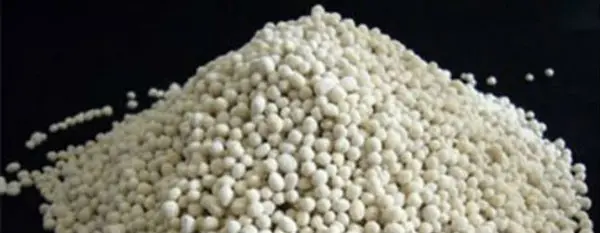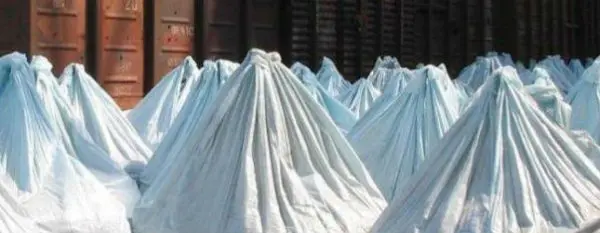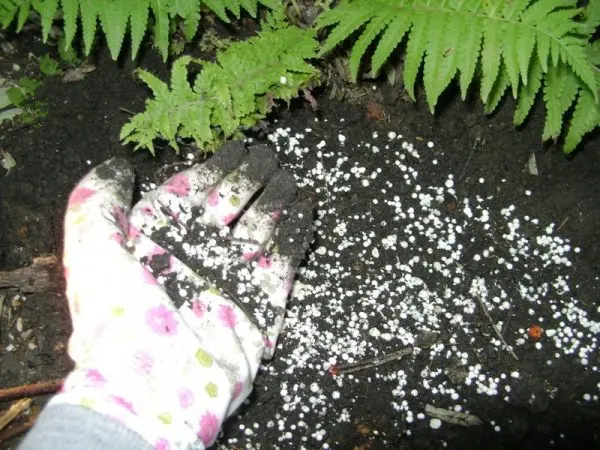Contents
The rational use of potassium magnesia in agricultural enterprises, in farming, as well as amateur gardening and vegetable growing, can significantly increase yields and improve the quality of fruit crops. This fertilizer brings especially noticeable benefits to crops that are sensitive to chlorine.
Fertilizer Features
Potassium magnesia refers to concentrated mineral fertilizers. It consists of elements necessary for all vegetable and garden plants: potassium – 30%; sulfur – 17%; magnesium – 10%.
The unavoidable chlorine content is as low as 1%, some options contain up to 3%, which makes this nutrient mixture considered chlorine-free. The fertilizer is produced in the form of a light powder or irregularly shaped granules of a grayish, sometimes pinkish tint. It dissolves easily with water, leaving a little residue.  Its characteristic feature: the simultaneous introduction of two necessary elements – potassium and magnesium, their use separately is not so effective, because they are unevenly distributed in the soil. When the main active substance of potassium magnesia decomposes, two types of ions are formed: positively charged potassium ions and negatively charged sulfur ions (sulfate ions). Sulfur-containing compounds are easily absorbed by the soil.
Its characteristic feature: the simultaneous introduction of two necessary elements – potassium and magnesium, their use separately is not so effective, because they are unevenly distributed in the soil. When the main active substance of potassium magnesia decomposes, two types of ions are formed: positively charged potassium ions and negatively charged sulfur ions (sulfate ions). Sulfur-containing compounds are easily absorbed by the soil.
Potassium ions do this in an exchangeable or non-exchangeable way. Potassium, absorbed in a non-exchange way, cannot easily penetrate into the root system of a plant, but on clay soils it is helped by minerals of hydromicas and montmorillonite by accumulating chemical elements. The mineral, which has penetrated into the soil by exchange, lingers there for a long time, it is easily consumed by the roots of plants. Powdered and fine-grained fertilizer contains more potassium absorbed in a non-exchange way, which means it is advisable to use it on loamy soils. On soils devoid of clay minerals, the use of large granules is more beneficial.

Methods of Use
Potassium magnesia is applied to the soil throughout the cultivated area, and dissolved with water as often as dry. It is poured (or poured) directly under the roots during planting or watering. Its aqueous solution is even sprayed with the green mass of plants during the growth period. The use of this fertilizer is universal – which is very convenient. Its use is indicated for open ground, as well as for greenhouses.
The application is calculated approximately as follows: 5 kg per 1 weave. For fruit trees, shrubs, 20-30 g / m2 is enough. For vegetables – 15 – 20 g / m2, root crops – 20 – 25 g / m2. Moreover, turnips, radishes, carrots, potatoes, beets need it most of all, they are recommended to add from 30 to 40 g / m2.
Video “Description of potassium magnesia”
In this video, you will learn how to use this potassium-magnesium fertilizer.
What effect does it have on cultures
Potassium, magnesium, sulfur – this is an excellent combination of trace elements necessary to improve the quality and usefulness of fruits. So the use of potassium magnesia causes an increase in the amount of starch in potatoes, sugar in beets, vitamin C in citrus fruits, grapes, and increases the concentration of vitamins in green vegetables. There will be more sugars in the fruits of garden trees. In addition, the fertilizer helps to increase yields, prolong fruiting, makes plants stronger in confrontations with diseases, and helps to endure severe winter frosts more easily.
How does it affect the soil
Potassium magnesia enriches the soil with trace elements necessary for crops. Root crops (potatoes, sugar beets, etc.) absorb a lot of potassium from the soil during their growing season, so potatoes are able to “take out” up to 2,5 kg of this element from a hundred square meters of land. So cultivated land is in dire need of replenishment with potassium, magnesium, sulfur, and organic fertilizers like manure or compost do not provide the right amount. Therefore, the introduction of complex organic and inorganic top dressings is so important for the soil.

Soddy-podzolic soils lack potassium and magnesium, peat, floodplain and red soils feel a clear lack of potassium and sulfur, therefore, on these types of soils, the use of this particular fertilizer will give the greatest effect. For gray forest and loamy soddy-podzolic soils, as well as depleted leached chernozems, potassium magnesia is recommended only in case of a lack of potassium and magnesium – and this may not be the case. It is important here which crops grew in one place for several years. On chernozems, gray and chestnut soils, its use can be effective only for some crops, for example, for sunflower, sugar beet, green vegetables, the same potatoes.
Terms of applying fertilizer
Fertilizer is applied in spring or autumn during the general digging of the site. On clay soils, this is best done in the fall, and on lighter soils, it can be done in the spring, and not buried deep, since potassium is inactive, it is placed immediately in the desired soil horizon. This is what concerns the general fertilization of the earth. And during the planting of trees, bushes, seedlings of vegetables, many practice feeding under the roots. A good result is given by watering with dissolved fertilizer throughout the summer. Many summer residents practice spraying with a solution of green mass of plants.
Video “Natural radioactivity of potassium magnesia”
This video shows the natural radioactivity of potassium magnesia.









